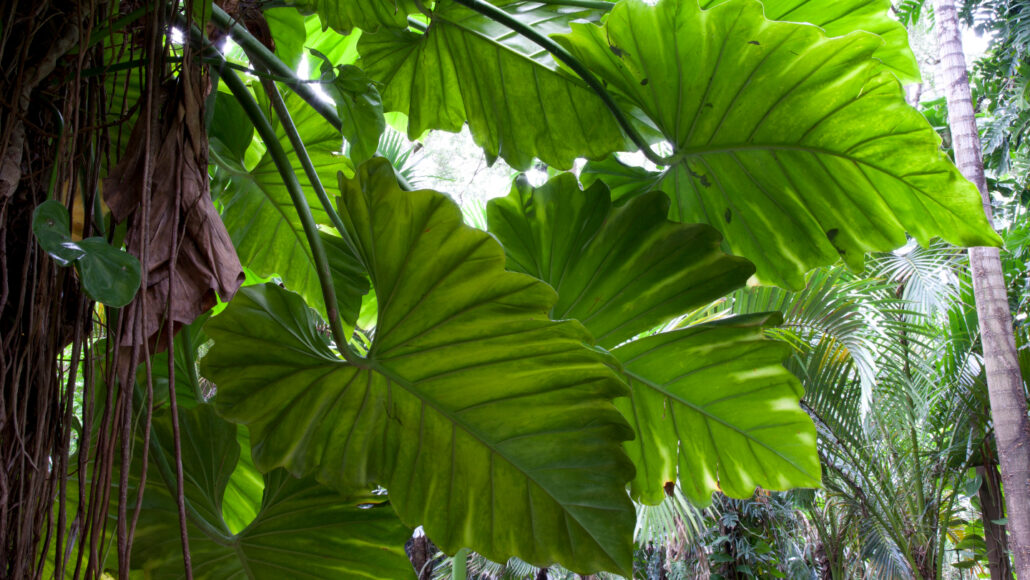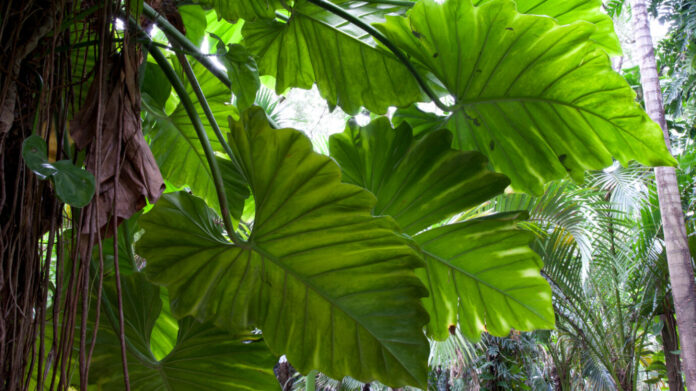As the Earth continues to warm, more leaves hitting their heat limit could threaten forests

Like people, leaves have their limits when it comes to heat.
Scientists first reported in 1864 that the leaves of some plants could survive up to 50° Celsius, only to perish beyond that threshold. More than 150 years later, researchers are making similar findings. In 2021, a study of 147 tropical tree species reported that the average temperature beyond which photosynthesis failed was 46.7° C.
Now, in the upper canopies of Earth’s tropical forests, roughly 1 in every 10,000 leaves experiences temperatures at least once a year that may be too high for photosynthesis, researchers report August 23 in Nature.
The best of Science News – direct to your inbox.
Headlines and summaries of the latest Science News articles, delivered to your email inbox every Thursday.Sign Up
That might seem a paltry sum, but a photosynthetic breakdown could harm entire forests if climate change is not halted, the scientists warn. A rise of about 4 degrees C above current temperatures in tropical forests could potentially cause wide swaths of leaves to die en masse, simulations suggest. Still, the researchers acknowledge that the prediction comes with uncertainties.
“One small possibility that we’re suggesting … is an incredibly dire tipping point” beyond which tropical forests perish, Christopher Doughty, an ecologist at Northern Arizona University in Flagstaff, said at an August 21 news briefing. But “there’s a lot we don’t know.”
When leaves get too hot, their photosynthetic machinery — proteins that convert light energy into sugars — breaks down. Keen to figure out whether tropical forests were approaching such a threshold, Doughty and colleagues obtained data collected by ECOSTRESS, a thermal sensor aboard the International Space Station, which captures vegetation temperatures on Earth’s surface in 70-meter pixels. That’s about the area that two large tropical trees could fill.
The team compared the data with measurements from devices on the planet’s surface. These included an instrument in the Amazon, mounted 64 meters high on a tower, as well as swarms of sensors taped to the bottoms of leaves in Brazil, Puerto Rico, Panama and Australia.
The analysis revealed a mosaic of temperatures in forest canopies. During periods when forests were hot and their soils were dry, temperatures across the canopy could reach an average peak of 34° C. But there was variability; some tracts exceeded 40° C.
The comparison also revealed a detail unseen by ECOSTRESS — a scatter within the mosaic. Individual leaf temperatures varied in single forest tracts, with some leaves reaching temperatures that far exceeded the tract average. About 0.01 percent of the time, upper canopy leaves sweltered at temperatures above the 46.7° C threshold, the team found.
The researchers also analyzed data from leaf-warming experiments in Brazil, Puerto Rico and Australia. These experiments showed that each degree of ambient warming had a disproportionate impact on leaf temperatures. For example, when Amazon leaves were subjected to an additional 2 degrees C of ambient warming, maximum leaf temperatures rose from 42.8° to 50.9° C.
The team used the experimental data, along with the satellite and ground-based data, to simulate the future of tropical forests under climate change. Most forests could endure about 4 degrees C of warming above current levels before trees lose all their leaves, and potentially die, the simulations suggest. That amount of warming might be possible by 2100 in a worst-case scenario in which greenhouse gas emissions continue rising through the century, the researchers say.
Still, there’s a lot of uncertainty. That’s in part because the adaptive capabilities of different tree species and how the deaths of individual leaves impact a tree’s mortality aren’t well understood.
The study may even overestimate vulnerability by “assuming that when leaves hit this critical temperature, they die,” says ecologist Christopher Still of Oregon State University in Corvallis. That’s possible, he says, but we don’t fully understand how long it takes various temperatures to kill different species’ leaves.
Summary:
Nikk Ogasa wrote this article to discuss certain plants in forests that aren’t photosynthesizing like they should. When plants get to a certain temperature, similar to humans, they stop functioning properly. Scientists are concerned about how this could affect the abundance of tropical forests. They are also concerned about the adaptability of plants when the temperatures surge in certain areas of topical forests. Scientists found that plants can successfully photosynthesize in temperatures up to 46.7 degrees celcius. How our sustainability affects the environment and other living things is an important factor to consider in my project.
Works Cited:
Ogasa, N. (2023, August 23). Some leaves in tropical forests may be getting too hot for photosynthesis. Science News. https://www.sciencenews.org/article/leaves-tropical-forests-photosynthesis-heat-limit




